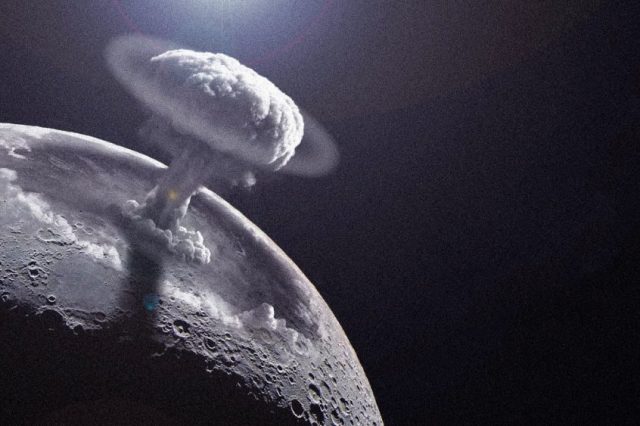"I have become death, destroyer of worlds..."
July 2020 marks 75 years since humankind detonated the first atomic bomb in history in what would later be Project Trinity. The first nuclear weapon detonation took place in a remote enclave of the New Mexico desert, changing the course of history forever. The detonated bomb used plutonium as fissile material, just like the one launched weeks later over Nagasaki, Japan. The first atomic bomb–that of Hiroshima–was made from uranium 235.
Growing international political tension
The creation of nuclear weapons resulted from the growing international political tension and the scientific advances of the late 1930s. Already amid the Second World War, the American effort became the Manhattan Project, aiming to produce an atomic bomb before Hitler’s Germany.
In the midst of 1945, with the defeated Nazis and Japan presenting a fierce resistance already spreading to their national territory, this enormous investigation work paid off. At 05.29.45 local time on July 16, the device codenamed Project Trinity (the atomic bomb) exploded with an energy equivalent to 19 kilotons, comparable to 19,000 tons of TNT.
The crater after the explosion
The explosion left a crater on the desert floor 3 meters deep and 330 meters wide. The surrounding mountains were illuminated at the detonation for one to two seconds. The observed colors of the lighting varied from purple to green and finally to white. The blast from the explosion took 40 seconds to reach observers, and the shock wave could be felt 160 kilometers away. The mushroom cloud reached 12 kilometers in height.
Oppenheimer quoted the Bhagavad Gita
Los Alamos director Robert Oppenheimer, who observed the explosion, later commented that the event reminded him of a line from the famous Indian text in the Bhagavad Gita: “I have become death, destroyer of worlds.” Richard Feynman claimed to be the only observer to see the explosion without sunglasses, shielding himself from harmful ultraviolet rays only behind the glass of a truck. In the crater, the desert sand, composed mainly of silica, melted into a light green glass called trinitite.
260 people witnessed the test at a distance of around 9 kilometers
After the test, the crater was filled in, and the army reported the event as an accidental explosion in an ammunition disposal area, which was not denied or made public until August 6, after the attack on Hiroshima. Around 260 people witnessed the test, none within a distance of fewer than 9 kilometers.
The area was declared a National Historic Monument in 1975 and is accessible to the public on the first Saturday of April and October. There is still small residual radiation at the site. The Trinity Monument, formed by a rough and dark obelisk-shaped rock about 3.6 meters high, marks the hypocenter of the explosion.
Have something to add? Visit Curiosmos on Facebook. Join the discussion in our mobile Telegram group.



